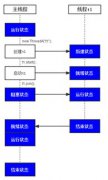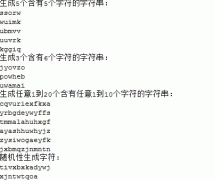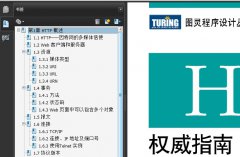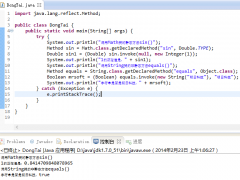Struts1.1b3部分源代码分析.
Struts1.1部分源代码分析 一:说明 本文针对Struts1.1b3做分析,主要希望通过对源代码的分析阐述Struts1.1的工作方式。 本文不适合初学者参考,适合具有一定基于Struts开发的程序员参考。
Struts1.1部分源代码分析
一:说明
本文针对Struts1.1b3做分析,主要希望通过对源代码的分析阐述Struts1.1的工作方式。
本文不适合初学者参考,适合具有一定基于Struts开发的程序员参考。
下面的描述;里面将会对ActionServlet,RequestProcessor,ModuleConfig等几个类做一些
说明。以注释源代码的方式,说明取工作流程。
非凡申明:Struts1.1代码版权属于Apache遵循The Apache Software License, Version 1.1.
本文版权属于孤魂一笑个人所有,任何个人或组织希望转载,请与我联系。并获得我的授权
方可转载。
二:ActionServlet分析
我们先来看一下使用Struts的配置文件。
org.apache.struts.tiles.ActionComponentServlet -->
/WEB-INF/tiles-examples-defs.xml
接下来我们来看一下ActionServlet的具体使用
Javax.servlet.http.HttpServlet
-->org.apache.struts.action.ActionServlet
所以本质上ActionServlet是一个普通的servlet,负责处理.do为后缀的Http请求.
servlet在执行doGet(),doPost(),之前先调用init(),
以下我们先分析一下init()方法
/**
* Initialize this servlet. Most of the processing has been factored into
* support methods so that you can override particular functionality at a
* fairly granular level.
* servlet初始化操作,注重初始化顺序
* @exception ServletException if we cannot configure ourselves correctly
*/
public void init() throws ServletException {
//注重初始化的顺序
//Initialize our internal MessageResources bundle
initInternal();
//Initialize other global characteristics of the controller servlet
//处理一些全局变量的设置如:debug,detail等
initOther();
//Initialize the servlet mapping under which our controller servlet
//is being Accessed. This will be used in the
&Html:form>//tag to generate correct destination URLs for form submissions
//主要是注册DTD文件以及解析web.xml关于ActionServlet的配置。如后缀名等.
// Configure the processing rules that we need
// digester.addCallMethod("web-app/servlet-mapping",
// "addServletMapping", 2);
// digester.addCallParam("web-app/servlet-mapping/servlet-name", 0);
// digester.addCallParam("web-app/servlet-mapping/url-pattern", 1);
//initServlet()的上面一段将把Struts默认的后缀名从web.xml中解析得到
//也就是web.xml中的如下配置:
//
//
//
//默认以.do结尾的请求都将由Struts来处理,你可以自己修改
//
initServlet();
// Initialize modules as needed
//在Attribute中保存类实例
getServletContext().setAttribute(Globals.ACTION_SERVLET_KEY, this);
//根据配置文件生成ModuleConfig,这是很重要的一步.下面会专门分析
//在tiles的配置中先解析注释为"Mark 0"的一个配置文件:/WEB-INF/struts-config.xml
//使用initModuleConfig方法解析XML文件.
//参数为prefix:"",paths:"/WEB-INF/struts-config.xml"
ModuleConfig moduleConfig = initModuleConfig("", config);
//初始化Message
initModuleMessageResources(moduleConfig);
//初始化JDBC DataSource
initModuleDataSources(moduleConfig);
//初始化PlunIn
initModulePlugIns(moduleConfig);
moduleConfig.freeze();
//在Struts1.1以后可以使用多个配置文件,在解析完默认的配置文件也就是上面提到的
//注释为"Mark 0"的一个配置文件:/WEB-INF/struts-config.xml后解析其他的配置文件
Enumeration names = getServletConfig().getInitParameterNames();
//依次解析注释为"Mark 1"、"Mark 2"、"Mark 3"对应配置文件
while (names.hasMoreElements()) {
//每一个配置文件的文件名
String name = (String) names.nextElement();
if (!name.startsWith("config/")) {
continue;
}
//
String prefix = name.substring(6);
moduleConfig = initModuleConfig
(prefix, getServletConfig().getInitParameter(name));
initModuleMessageResources(moduleConfig);
initModuleDataSources(moduleConfig);
initModulePlugIns(moduleConfig);
moduleConfig.freeze();
}
destroyConfigDigester();
}
/**
* 此方法使用Digester解析XML,关于使用Digester的介绍参看我的另外一篇文章
*
- 上一篇:Struts1.0学习文档-初学者入门
- 下一篇:STRUTS 入门教学
精彩图集
精彩文章





